The salt flat in Uyuni, Bolivia, is a proper paradise for overlanders and landscape photographers. As I happen to fall into both of those categories, Uyuni is one of my favorite places on Earth.
The stunning scenery comes with a cost: its extremely high elevation (3,700 meters, 12,139 feet above sea level) makes it largely inhospitable. Just being here, trying to actively enjoy my surroundings, took an enormous toll on me—physically and mentally. Still, I loved shooting here as I was able to test my limits, to discover how far I was willing to go to get that perfect shot.
The small town of Uyuni is the gateway to the salt desert, the largest one in the world. From town, there are still around 50 kilometers of dirt roads to cover before arriving at the salt flat, a touristic gem hidden in this remote wilderness. The town abounds with all kinds of tourist amenities, but many travelers interested primarily in photography choose to find accommodation in one of the two hotels located in the flat itself. Accommodation in the salt flat is much more expensive than in Uyuni, but it might be worth it, as it allows photographers instant access to scenic spots. Camping is an option, only possible if you have your own vehicle as available rentals are not equipped for camping. The most adventurous travelers are, of course, free to pitch a ground tent almost anywhere.

Getting there by air is not quick or convenient, but quite interesting. A comically small plane takes you from La Paz to Uyuni.

Uyuni is a departure point for all kinds of excursions to the salt flat and other points of interest. If you’re not using your vehicle, you’ll find guided visits or rental car companies.
The best time to visit Uyuni is in its rainy season, December to April. During this period, the rain forms a water film on top of the salt flat, thus creating picturesque reflections of the sky. Consequently, there are more visitors during this time. Even in the high season, though, the place doesn’t feel crowded. This is one of the perks of traveling to the most remote corners of the earth: you’re almost always alone, and the most beautiful places are, more often than not, all yours.

The otherworldly landscape is what’s left behind from ancient salt lakes that vanished millennia ago. The salt remains, rising from the ground in distinct hexagonal shapes, creating the unmistakable vistas stretching endlessly toward the horizon. Apart from tourism, locals often work as salt collectors, so another typical setting is countless conical mounds of salt stretching as far as the eye can see.
My main objective was to take time-lapse shots of the night sky reflected on the salt flat. Although wintertime brings the necessary conditions for the reflections, it also carries an array of uncomfortable weather conditions. It rained during the night, and the sky was almost always hidden by clouds. After three long, intense, sleepless nights, I managed to get only two shots that were anywhere near to my artistic vision.
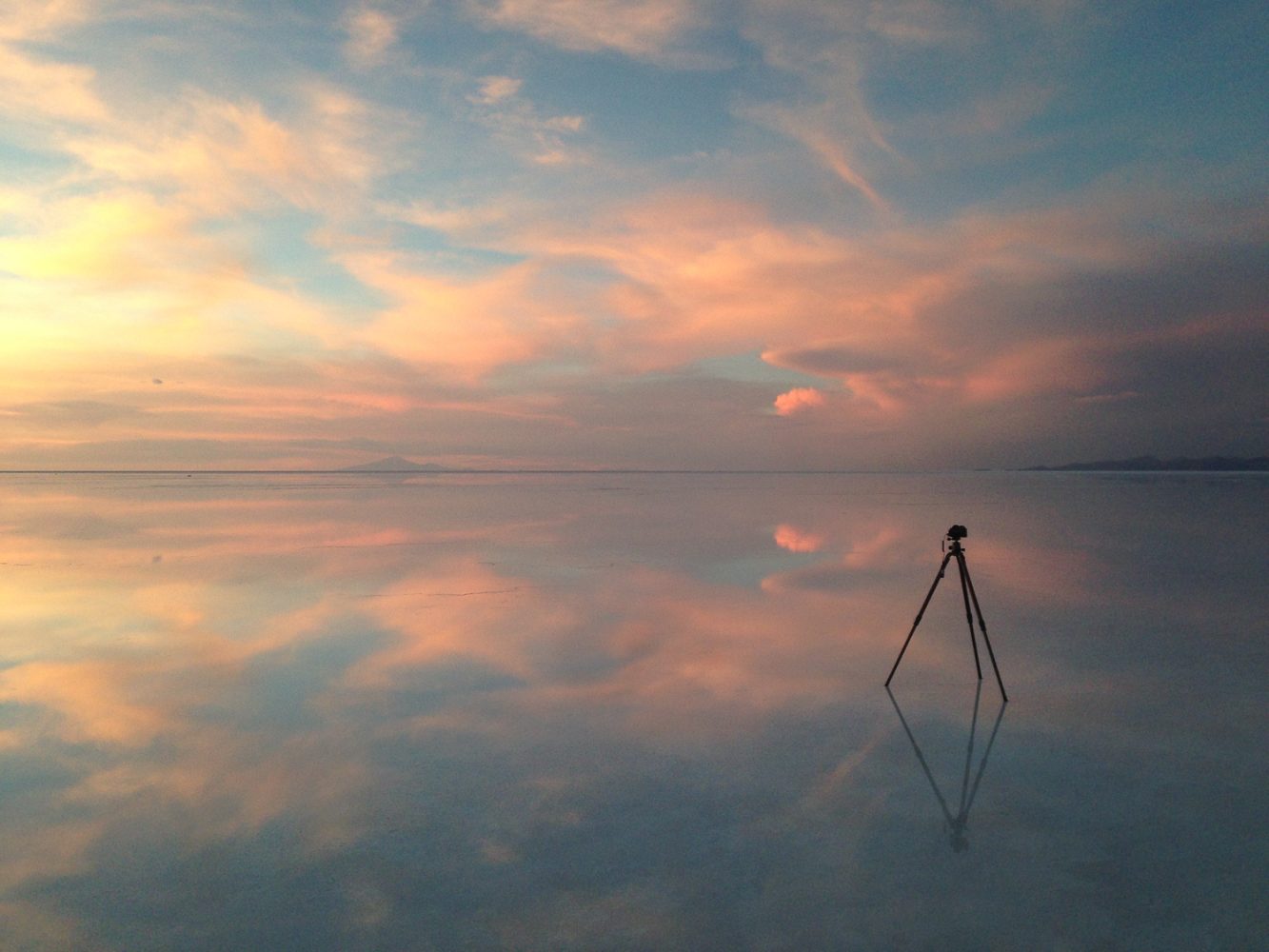
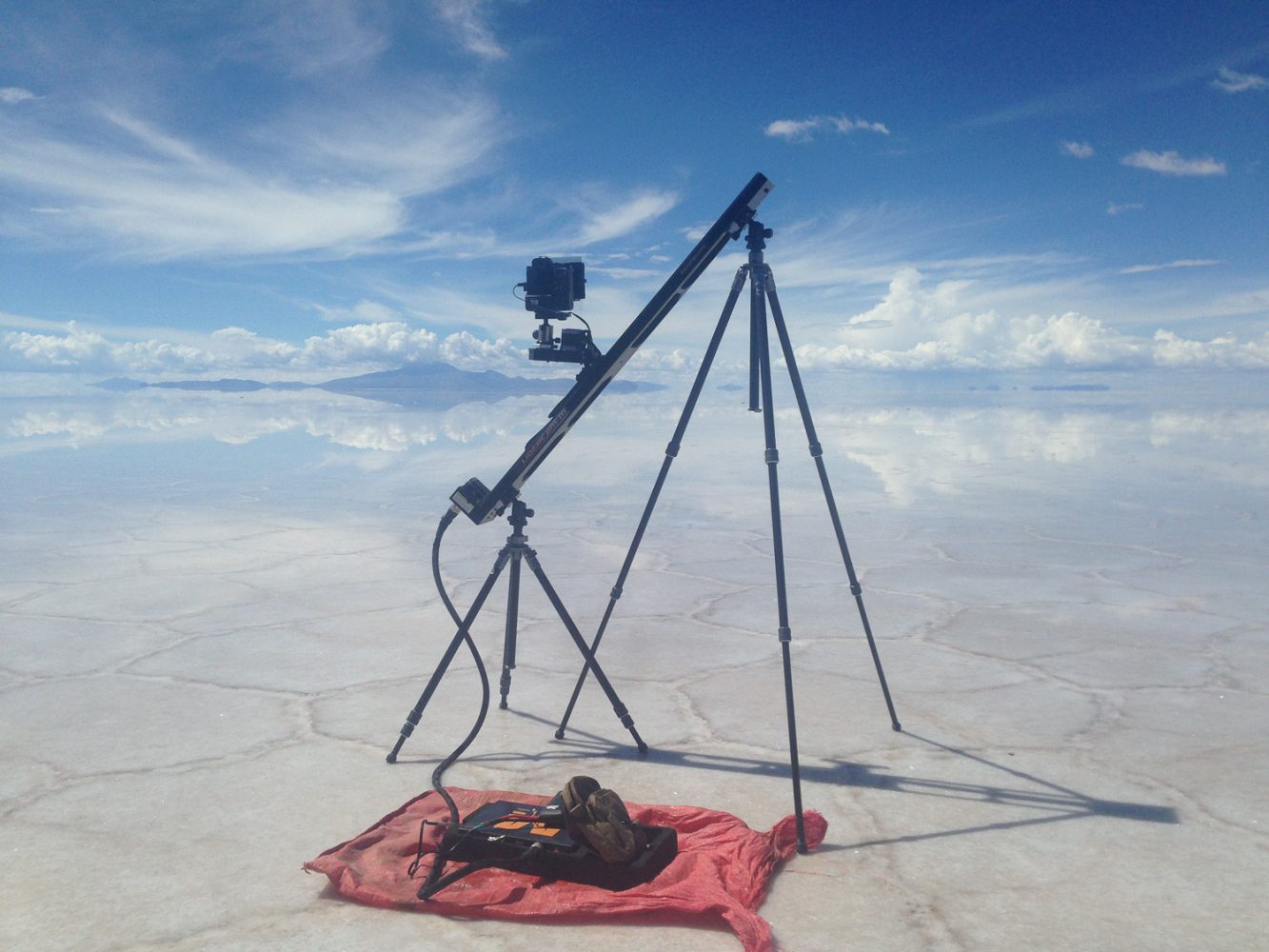
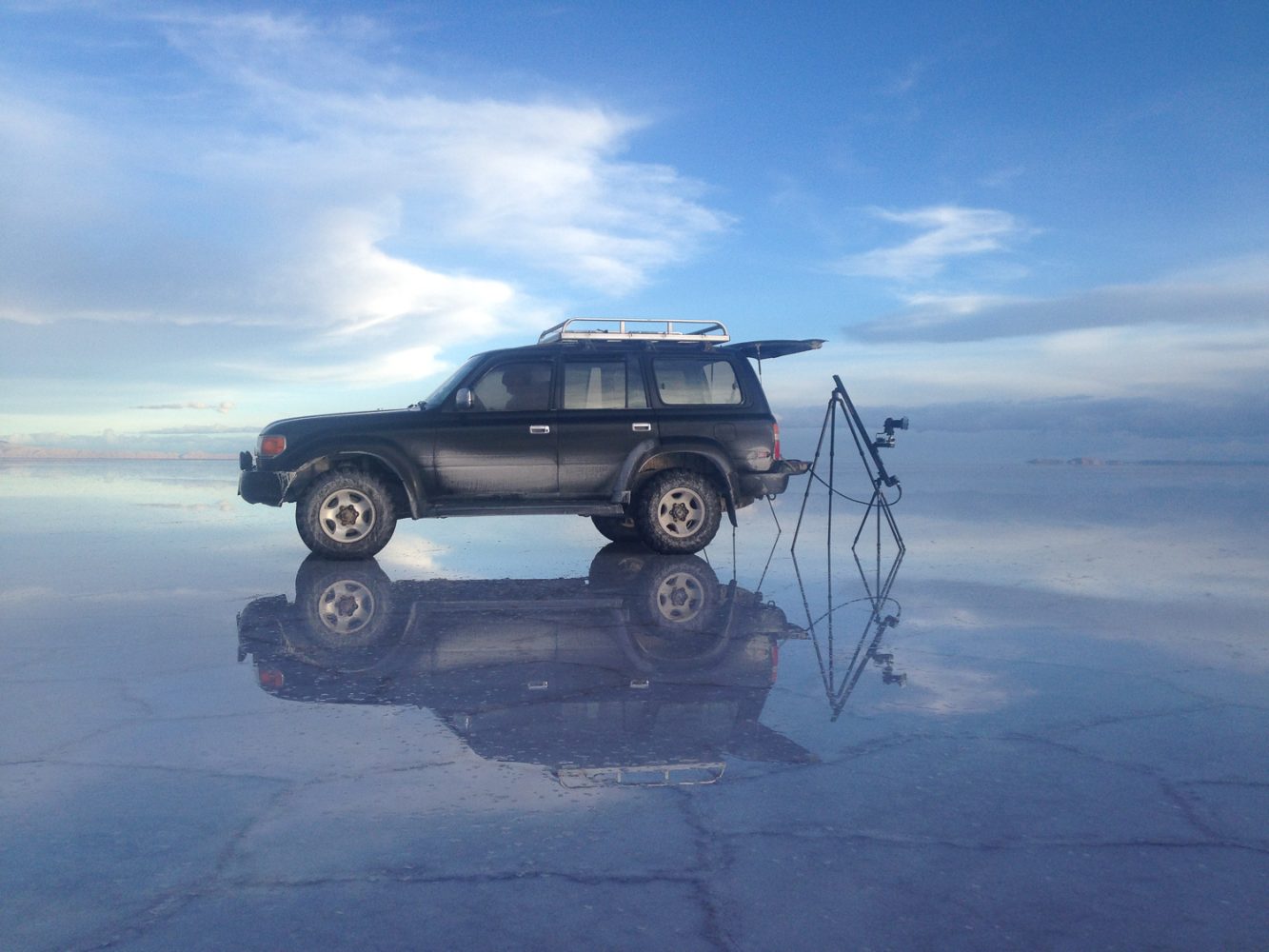
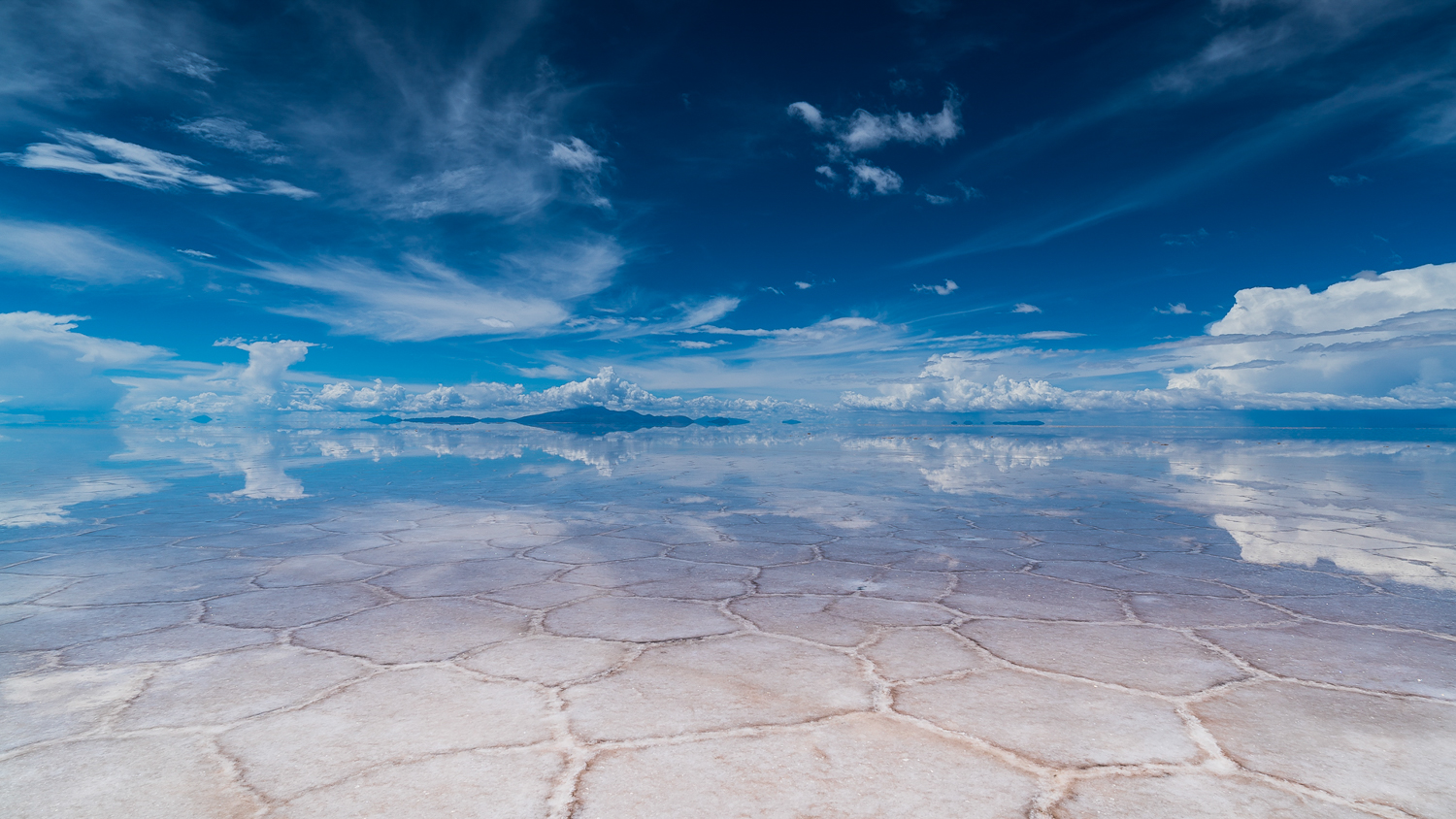
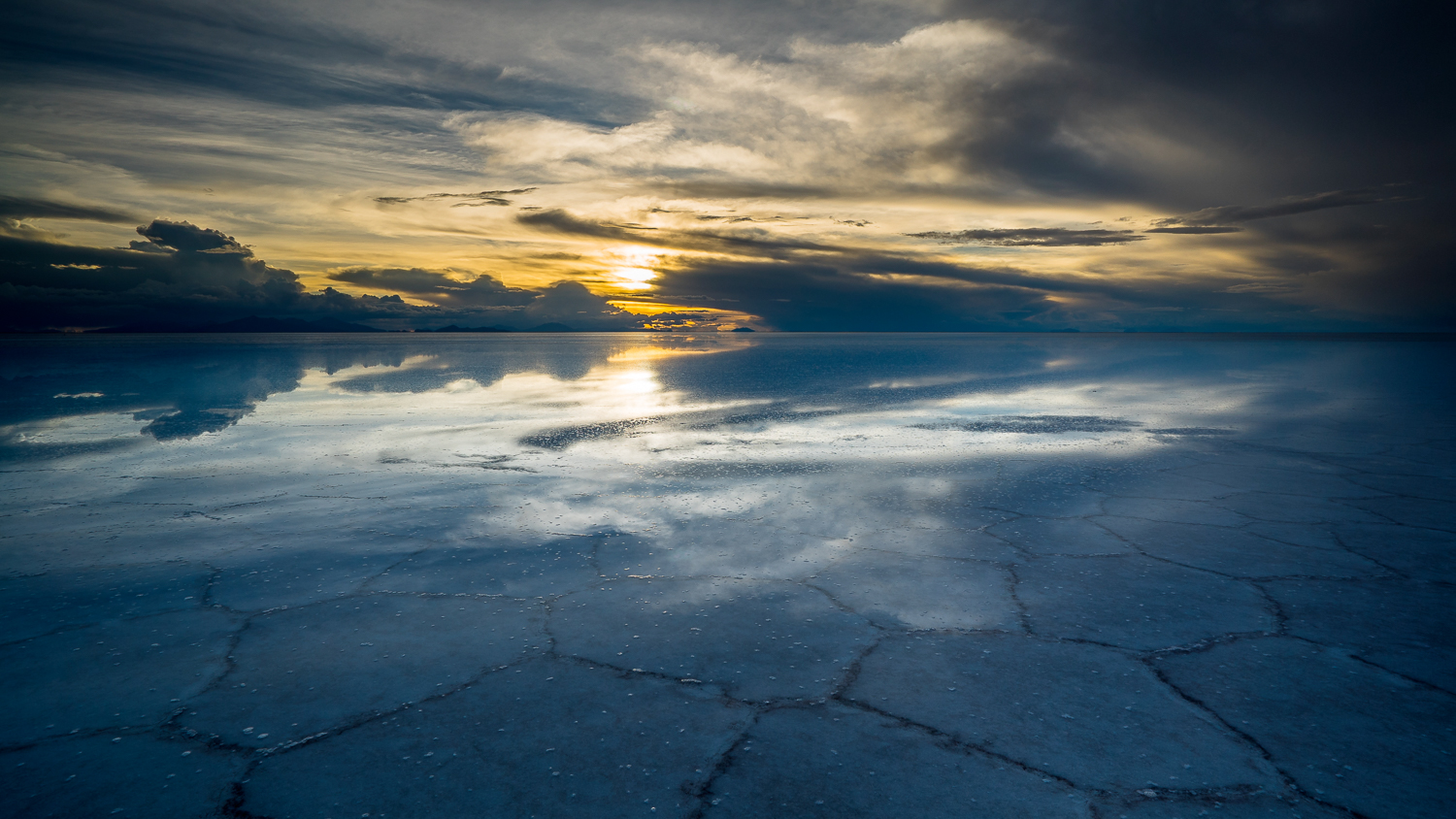

The most convenient way to move around is to hire a local guide, as they have appropriate vehicles for driving on these complicated trails and know all the best spots and the ways to get to them. The vehicle of choice here is a Toyota Land Cruiser 80 Series, which has proven its reliability and easy maintenance time and time again. The scenery is almost completely wild, with no tracks or signs to follow in the salt flat, the steppe, or on the high plateau. Besides, the salt would corrode your vehicle in no time. The locals have specialized washing stations in town, where they are able to skillfully perform a deep cleaning of the chassis with pressurized water.

Another must-see in Uyuni is the Rock Tree. There are several peculiar rock formations on the way to this most well-known one. The road to it cuts through the desolate steppe. At first, there were tourists to be seen every now and then, but as the road continued toward the Chilean border, I saw absolutely no one.

The emptiness of the landscape is astonishing, with nothing for miles and miles: no gas stations, no stores, no hotels. This place is so remote that it’s necessary to plan your stay in advance and bring food, water, and fuel for the entire duration of your excursion south—mine lasted four days.

La Laguna Colorada, or the Red Lagoon, is a gorgeous shallow lake where flamingos dwell. Getting there from Uyuni takes more than five hours by car, so I found accommodation in simple adobe houses. The Red Lagoon is located at over 4,000 meters (over 13,000 feet) above sea level, and this is where I felt the elevation affects the most: it was hard to fall asleep, and when I did manage it, I would usually wake up hyperventilating.

The salt flat looks wholly deserted, but in its center hides Isla del Pescado, or Incahuasi Island, an incredible place where some locals live, a small spot of land covered with cacti. It’s not really an island but rather an elevation in the plain salt desert that stands out in its water-covered surroundings in the winter season.
The magical days I spent in the salt flat resulted in one of my favorite films I have made so far, Reflections from Uyuni.
Our No Compromise Clause: We carefully screen all contributors to ensure they are independent and impartial. We never have and never will accept advertorial, and we do not allow advertising to influence our product or destination reviews.


